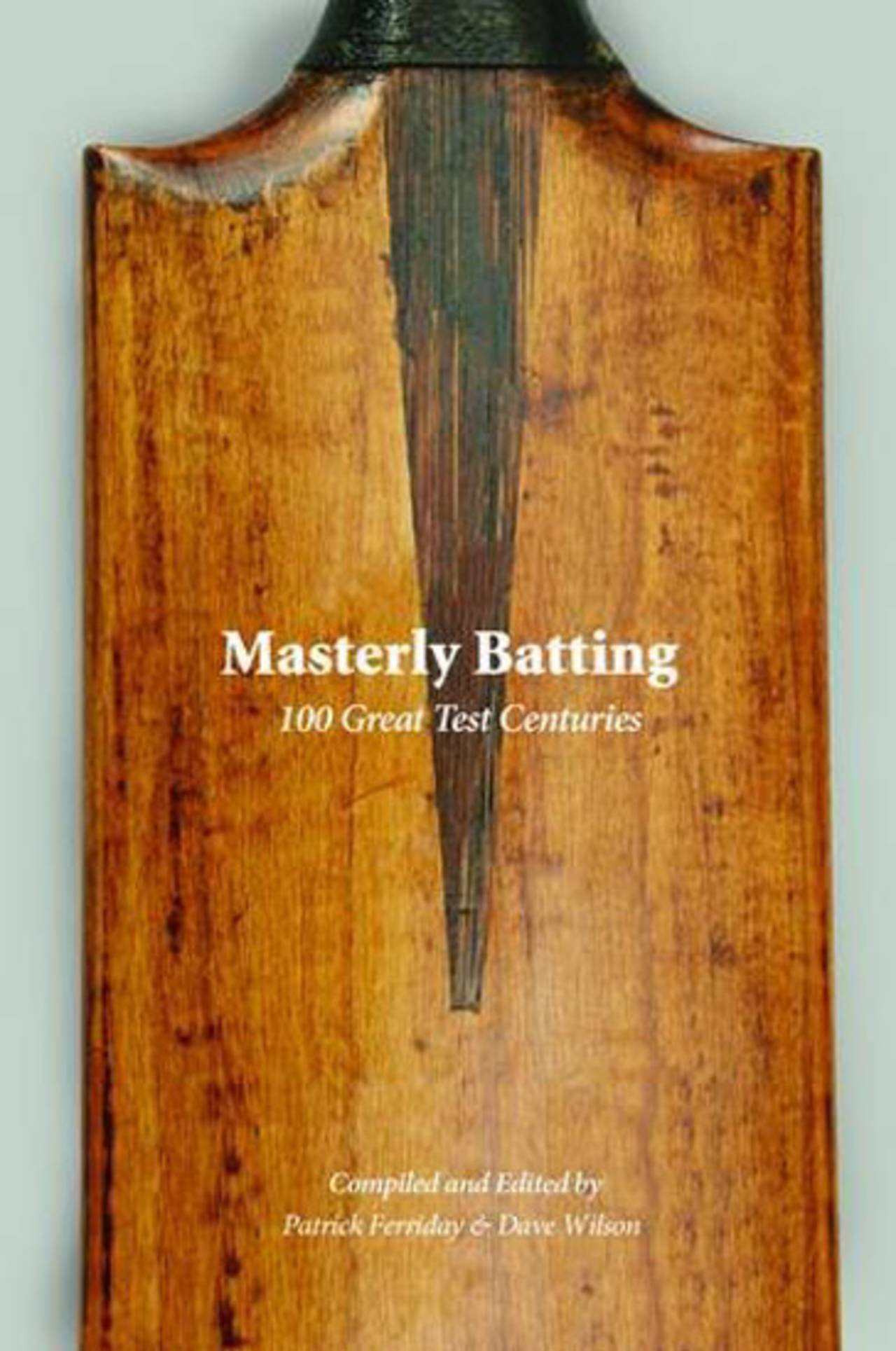It is both an invidious and a beguiling task. The urge to rank things runs deep - in cricket, in sport, in life (though it is perhaps something males delight in more). Inevitably, the impulse to disagree is just as hardwired, a patellar reflex of the socialised human brain. "You think that is the best...?" In compiling Masterly Batting: 100 Great Test Centuries, Patrick Ferriday and Dave Wilson, assisted by an able band of co-conspirators, have struck up a pub debate liable to exercise pedants, inflame nationalists and, perhaps worst of all, provoke the Twitterati to fresh displays of mandrill pomposity. There could be broken glass.
This is no back-of-a-beer-mat musing, however. The authors have come tooled up. The research has been rigorous, their soundings far and wide (former Wisden editor John Woodcock is one of the first to be credited in the acknowledgements). In setting out the project's aims, Ferriday is awake to the difficulty, both rousing and daunting. Ranking the 100 greatest Test hundreds - for that is what they have done, or attempted, despite the enigmatic subtitle - is not a matter of irrefutable fact, but rather falls into the category "where no such certainty can bring the debate to a crushing and indelible conclusion. And it is precisely these latter cases that are the most stimulating; opinion is reinforced by fact, fact is questioned, opinion reinforced or, where open minds prevail, altered."
The danger of having an open mind, of course, is that your brain falls out. But Masterly Batting should find the thoughtful audience it deserves. The methodology is explained in the introduction, with ten categories - size, conditions, bowling attack, percentage, chances, speed, series impact, match impact, intangibles, compatibility - weighed against each other. The precise formula is not revealed but we can assume it is quite exacting, as there are several tied positions. The prospect of sifting through over 2000 possible candidates would leave many to conclude that pure maths was the only way to go, but Ferriday and Wilson have brought humanity to the numbers by stirring in contemporaneous reportage and the wisdom of numerous cricket judges.
The order is, in many ways, subordinate to the higher purpose, which is to collate great cricket writing on great cricket feats. Measuring centuries against each other was settled upon as a "valid and achievable goal" but the effect is to paint vivid pictures of a different kind of century - more than 100 years of Test batting. This is particularly true with regard to the top 25 innings, which are given extended treatment and take up more than half of the book.
Never mind the run-making, the keystrokes are just as impressive. There are some fabulous pieces in the book by a variety of writers, including David Frith, Stephen Chalke, Telford Vice and Rob Smyth. Chalke provides a superb portrait of Herbert Sutcliffe, Daniel Harris on Gordon Greenidge fizzes and crackles with an apposite energy, while Vice's essay on Jacques Kallis - "He has fashioned one of the great careers with the passion he might have brought to mowing the lawn" - is full of good lines. Ferriday himself worships thrice at the altar of Brian Lara, while the comic-book vitality of
Kevin Pietersen's 186 in
Mumbai is another example of the multitudes contained within.
The result is richly satisfying, a kaleidoscope of dogged rearguards, effervescent counter-attacking and dreadnought destruction. Absence is what makes the heart grow harder. Each reader will come to
Masterly Batting in search of particular favourites, some of whom are bound to be disappointed. No Atherton in Johannesburg, no Dravid in Adelaide? It is the relative dearth of Asian representatives that will cause most debate: seven Indian entries, five Pakistani and three Sri Lankan, plus Mohammad Ashraful. Virender Sehwag's 293
in Mumbai is the highest ranked, at No. 15, while Ashraful comes well ahead of Sachin Tendulkar, whose single worthy effort - 155 not out against Australia
in Chennai - is deemed "great" enough to creep in at No. 100. This may seem doubly controversial in the prevailing climate of Sachinalia, although it is interesting to note that a similar exercise in 2001, the
Wisden 100, found no room for Tendulkar at all.
Perhaps a greater oversight is the lack of Asian voices - Rahul Bhattacharya is quoted in the opening pages, but that is as close as an Indian writer gets to the book. The subcontinent stretches far across cricket's globe, however, and this might have been better reflected. On the matter of which innings did and didn't make the cut, Ferriday is happy to engage and he would doubtless provide a sound argument for the inclusion of both Kallis hundreds
in Cape Town in 2011 when Tendulkar's in the same match misses out.
But they are still serving at the bar and argument will continue long into the night. In a publishing landscape that is dominated by turgid autobiographies and glossy compilations, Masterly Batting stands out like a Laxman cover drive. And where does Kolkata 2001 rank next to Bradman on a sticky MCG pitch or Mark Butcher's Headingley heroics? Time for me to get my coat.
Masterly Batting: 100 Great Test Centuries
Compiled and edited by Patrick Ferriday and Dave Wilson
Von Krumm Publishing
290 pages; £15


